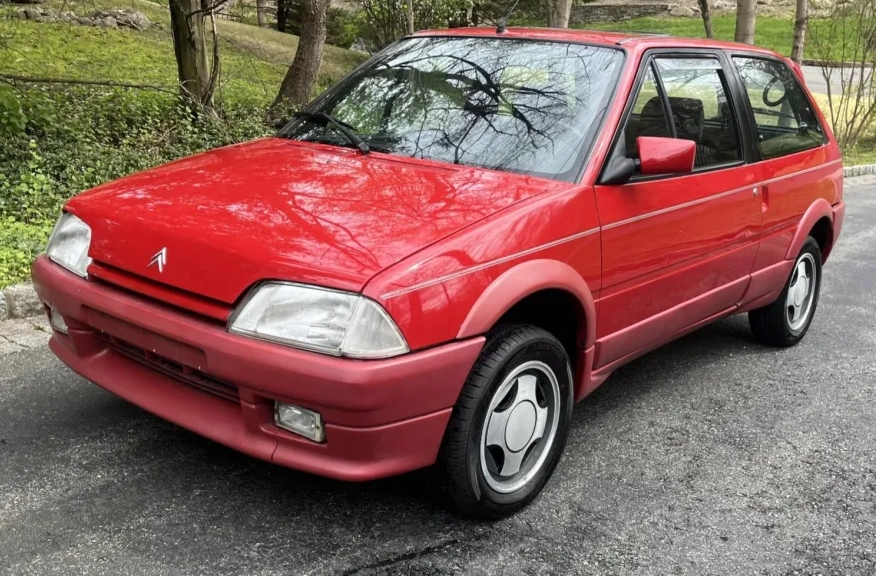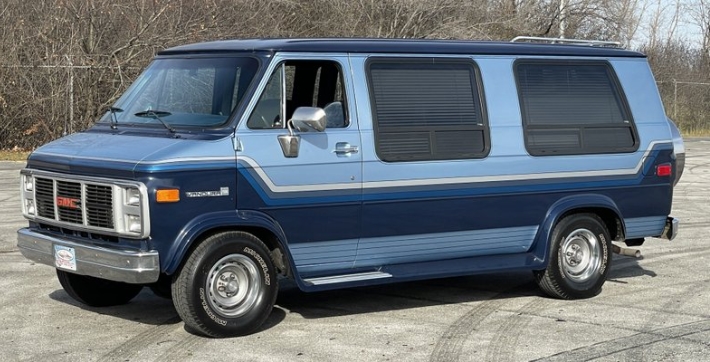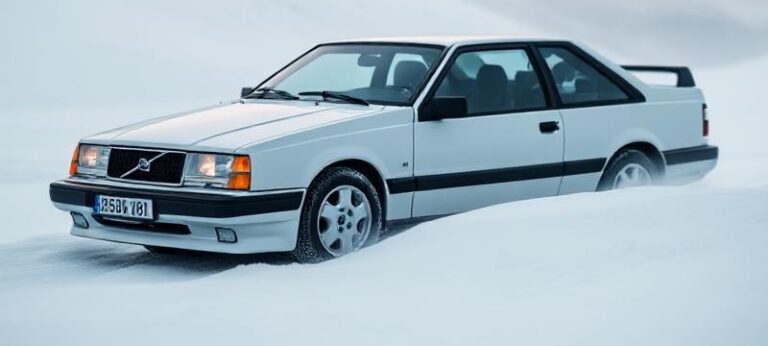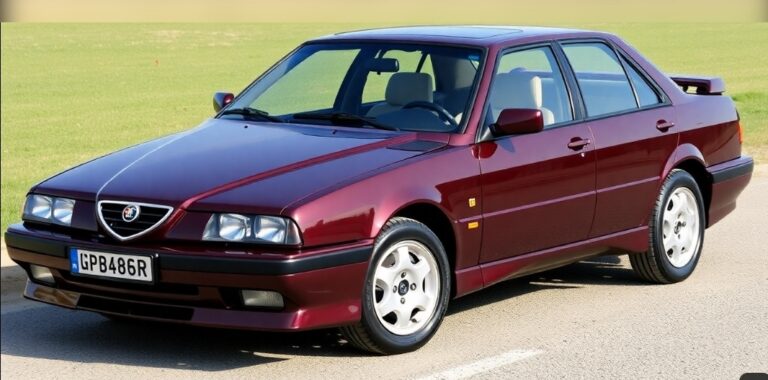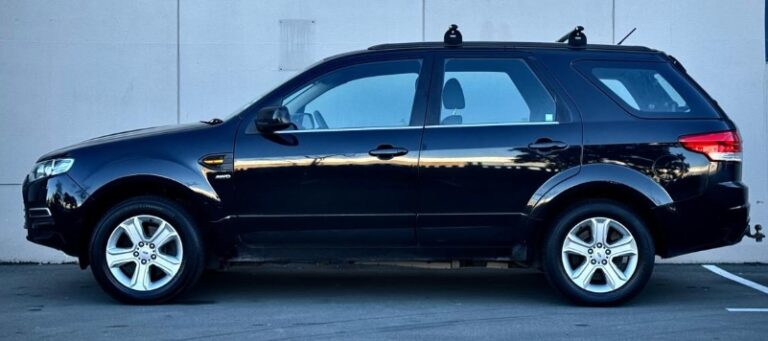The Lightweight Champion: Charting the Evolution of the Citroën AX
In the landscape of 1980s automotive design, where sharp angles and aerodynamic efficiency were king, Citroën needed a hero. The French marque, long celebrated for its radical innovation, found itself with an aging and somewhat disjointed supermini lineup consisting of the 2CV-derived Dyane, the Visa, and the LNA. The market demanded a modern, efficient, and practical small car to combat rivals like the Peugeot 205 and Renault 5. Citroën’s answer, unveiled at the 1986 Paris Motor Show, was a masterclass in minimalist engineering: the AX.
Produced from 1986 to 1998, the Citroën AX was far more than just another small hatchback. It was a testament to the philosophy of “less is more,” a car designed from the ground up to cheat the wind and sip fuel. Over its twelve-year production run, it evolved from a spartan economy champion into a diverse family, encompassing everything from world-beating diesels to giant-slaying hot hatches. This is the story of its evolution.
Project S9: The Genesis of Lightness (Early 1980s – 1986)
The AX was born from the PSA Group’s ‘Project S9’. The brief was clear: create a new supermini that was cheaper to produce than its technically complex predecessor, the Visa, while being substantially more fuel-efficient than anything else on the market. The two pillars of this project were aerodynamics and weight reduction.
The design team, led by Art Blakeslee, penned a shape that was deceptively simple. With a drag coefficient (Cd) of just 0.31, it was one of the most aerodynamic cars in its class, slipping through the air with remarkable ease. This was achieved through a steeply raked windscreen, a Kamm tail-style rear, and careful management of airflow around the body.
The quest for lightness was even more radical. Engineers scrutinised every component. The base model tipped the scales at a feather-light 640 kg. This was accomplished through the extensive use of thin-gauge, high-strength steel, a lightweight plastic tailgate, and a minimalist approach to construction. The car famously featured a single windscreen wiper, a single door mirror on lower-spec models, and a simple, spartan interior. Under the bonnet lay the brand-new, all-aluminium PSA TU-series engine, a lightweight and efficient powerplant that would serve PSA products for decades.
Phase 1 (1986 – 1991): The Economy King and the Budding Performer
The first Citroën AX models rolled into showrooms in late 1986, initially only as a three-door hatchback. The reception was positive; journalists praised its spacious interior (for its size), comfortable ride, and, above all, its astonishing fuel economy. The wafer-thin doors and unapologetically plastic dashboard were points of criticism, but for buyers seeking maximum miles per gallon, these were acceptable compromises.
The initial range was straightforward, built around the new petrol engines:
AX 10: Powered by a 954cc TU9 engine producing 45 bhp. This was the entry-level model, available in basic E and slightly better-equipped RE trims.
AX 11: The volume seller, using the 1124cc TU1 engine with 55 bhp. This offered a much-needed boost in performance and was available in trims like RE, TRE (which added features like a rear wash/wipe and plusher upholstery), and the more upmarket TGE.
AX 14: The top of the standard range, featuring the 1360cc TU3 engine. Initially with a single-barrel carburettor making 65 bhp in TRS trim, it later gained a double-barrel carburettor for 75 bhp, offering genuinely nippy performance.
A five-door model joined the range in 1987, significantly broadening the AX’s appeal to small families. But 1987 also saw the first hints of the AX’s wild side.
AX Sport (1987): A homologation special built for motorsport. This was a raw, focused machine. It used a unique 1294cc engine—a derivative of the TU block—fed by twin Solex carburettors, producing 95 bhp. Stripped of almost all comforts and weighing just 715 kg, with its iconic white steel wheels, it was a frenetic and engaging drive, a true enthusiast’s car.
AX GT (1988): Where the Sport was a stripped-out racer, the GT was the mainstream hot hatch. It used the 1360cc engine but with a twin-choke Weber carburettor, boosting power to 85 bhp. Combined with a weight of just 720 kg, the GT was a pocket rocket. It featured a sporty body kit, alloy wheels, and front fog lamps, becoming an instant hit with young drivers and a cult classic.
The final, and perhaps most significant, addition to the Phase 1 lineup came in 1988: the AX Diesel. Fitted with a 1360cc TUD engine producing 53 bhp, the AX 14D was not fast, but it was revolutionary in its frugality. In 1989, an AX 14D, driven by a team of journalists, set an official Guinness World Record by travelling from Dover to Barcelona and back, a distance of 1,602 miles, on a single tank of fuel, averaging an incredible 112 miles per gallon. This cemented the AX’s reputation as the undisputed champion of economy.
Phase 2 (1991 – 1998): A Touch of Sophistication and a New Hero
By 1991, the AX was due for a refresh. While the car’s core concept was sound, its interior felt dated and flimsy compared to newer rivals. The Phase 2 facelift, launched in July 1991, addressed these criticisms head-on.
The exterior changes were subtle but effective: a smoother front bumper, a new grille that integrated the Citroën chevrons more elegantly, clear front indicator lenses, and a redesigned tailgate with a larger glass area. The biggest transformation, however, was inside. The old, brittle dashboard was replaced with a completely new, more substantial moulding that felt far more robust and conventional. The switchgear was improved, and soundproofing was increased, making the AX a more refined place to be.
Under the skin, the major change was the widespread adoption of fuel injection to meet tightening emissions regulations. This also brought subtle shifts in the model lineup:
Base Models: The 1.0i (954cc) and 1.1i (1124cc) engines continued, now with single-point fuel injection. Trim levels were often rebranded into a confusing array of special editions that changed frequently, with names like First, Dimension, Forte, Spree, and Elation.
AX 4×4 (1991): A curious but capable addition. Using the 1360cc fuel-injected engine and a simple, driver-selectable four-wheel-drive system, the AX 4×4 offered impressive off-road and poor-weather capability in a tiny package. It sat on a raised suspension and was a surprisingly rugged little machine.
AX GTi (1991): The new performance flagship. The carburetted GT was retired, and in its place came the GTi. It used a multi-point fuel-injected version of the 1360cc engine, initially producing 100 bhp (later revised to 95 bhp with a catalytic converter). With its more aggressive body kit and iconic three-spoke alloy wheels, the GTi was a direct competitor to its platform-mate, the Peugeot 106 XSi, and was praised for its sharp handling and effervescent performance.
AX Volcane: A “warm hatch” version, effectively a GTi in a more discreet, luxury-oriented package, often seen in the five-door body style.
The diesel engine also evolved. In 1994, the 1.4L diesel was replaced by a larger 1.5L (1527cc) TUD5 engine. While power only rose slightly to 58 bhp, the new unit was smoother, quieter, and even more economical, ensuring the AX remained a top choice for budget-conscious motorists right to the end of its life.
.
MANY auto lovers not only spend time in their garages to tinker on their autos, but have other projects going on in there as well. Wood working is a popular pastime for the creative type of individual. Not sure what to make next? Or thinking about getting into this kind of hobby? There’s lots of possibilities… Here’s some of them…

.
The Final Years and Legacy
In 1996, Citroën launched the Saxo. While marketed as an all-new car, it was, in reality, a heavily re-engineered and re-skinned AX. It used the same floorpan, core structure, and doors, proving the fundamental rightness of the original AX design.
With the Saxo now positioned as the primary supermini, the AX range was slimmed down and marketed as a budget-conscious entry-level choice, often badged as the AX Debut or AX Spree. Production finally ceased in 1998 after an impressive 12-year run and over 2.4 million units sold.
The Citroën AX’s legacy is multifaceted. It was a car that perfectly captured the zeitgeist of its time, prioritising efficiency above all else. Its obsessive focus on weight reduction and aerodynamics set a benchmark that influenced small car design for years to come. It was the car that solidified the reputation of PSA’s TU-series engines and TUD diesels as robust and incredibly frugal powerplants.
But beyond its economy, the AX had a spark. The GT and GTi models proved that a lightweight, simple chassis was the perfect recipe for affordable fun, and they remain beloved cult classics today. From the record-breaking diesel to the rally-bred Sport, the AX demonstrated a remarkable breadth of talent. It was a simple car, cleverly executed, and a true champion of lightweight design.
